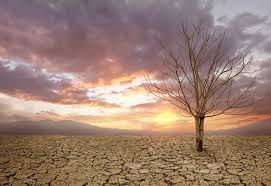NEW YORK: Climate change is no longer a distant threat—it is happening now. Human activities, particularly the emission of heat-trapping greenhouse gases, are driving significant changes to Earth’s climate, with widespread and visible effects on the environment. Glaciers and ice sheets are shrinking, river and lake ice is melting earlier, plant and animal habitats are shifting, and vegetation is blooming sooner than in the past. These changes are not just predictions; they are current realities.
The consequences long foreseen by scientists—such as the loss of sea ice, rising sea levels, and more intense heat waves—are now unfolding. The severity and pace of these changes, along with their associated risks, depend heavily on the actions we take now to mitigate and adapt. Every fraction of a degree in global warming increases the likelihood of severe impacts, including extreme weather events, ecosystem disruptions, and irreversible damage.
Some changes, like droughts, wildfires, and extreme rainfall, are occurring even faster than scientists anticipated. According to the Intergovernmental Panel on Climate Change (IPCC), the United Nations body responsible for assessing climate science, the scale of recent climate shifts is unprecedented in human history. Many of these changes are irreversible and will persist for centuries, if not millennia.
The IPCC’s Sixth Assessment Report (2021) highlights that human-induced greenhouse gas emissions have already raised global temperatures by nearly 2°F (1.1°C) since the late 19th century. If current trends continue, the planet is on track to exceed 1.5°C (2.7°F) of warming within the next few decades. This warming will impact every corner of the globe, with consequences that vary by region but are universally profound.
The future trajectory of climate change hinges on human actions. Increased greenhouse gas emissions will exacerbate climate extremes and amplify their destructive effects. However, reducing emissions can still mitigate some of the worst outcomes. The scientific consensus is clear: climate change poses a dire threat to human well-being and the planet’s health. Delaying global action risks closing the narrow window of opportunity to secure a livable future.
Projected Impacts of Climate Change in the United States
The Third and Fourth National Climate Assessment Reports outline the following expected effects of climate change across the U.S.:
- Rising Sea Levels
Global sea levels have already risen by about 8 inches (0.2 meters) since 1880. By 2100, they are projected to rise by an additional 1 to 6.6 feet (0.3 to 2 meters), depending on emission scenarios. This rise is driven by melting ice sheets and the thermal expansion of seawater. - Intensifying Hurricanes
As the climate warms, hurricanes are expected to become stronger and more intense, with higher rainfall rates and greater destructive potential. - Increased Droughts and Heat Waves
The Southwest will face more severe droughts, while heat waves will become more frequent and intense across the country. Conversely, cold waves will become less frequent and less severe. - Longer Wildfire Seasons
Warming temperatures and prolonged droughts have already extended wildfire seasons in the western U.S. By 2050, the area burned by wildfires could increase by two to six times. Even regions like the Southeast, traditionally wetter, could see a 30% rise in wildfire activity. - Shifting Precipitation Patterns
Climate change is altering rainfall and snowfall patterns, leading to more flooding in some areas and droughts in others. The northern U.S. is expected to see increased winter and spring precipitation, while the Southwest will likely experience drier conditions. - Extended Growing Seasons
The frost-free season has been lengthening since the 1980s, particularly in the western U.S. This trend is expected to continue, affecting ecosystems and agricultural practices. - Record-Breaking Temperatures
The summer of 2023 was the hottest on record, with global temperatures 2.1°F (1.2°C) above the 1951–1980 average. This trend of rising temperatures is expected to persist. - Ice-Free Arctic Summers
The Arctic Ocean is likely to become ice-free in late summer before mid-century, a dramatic shift with far-reaching consequences for global weather patterns and ecosystems.
Regional Impacts Across the U.S.
Climate change is affecting each region of the country differently, presenting unique challenges:
- Northeast: Heat waves, heavy rainfall, and sea level rise are straining infrastructure, agriculture, and ecosystems. States and cities are beginning to integrate climate resilience into their planning.
- Northwest: Reduced water supplies, increasing wildfires, and ocean acidification are major concerns. Changes in river flows are exacerbating water scarcity.
- Southeast: Rising sea levels and extreme heat threaten the economy, environment, and public health. Water availability is declining, impacting agriculture and ecosystems.
- Midwest: Extreme heat, flooding, and heavy rainfall are affecting infrastructure, agriculture, and water quality. The Great Lakes region faces unique risks.
- Southwest: Increased heat, drought, and insect outbreaks are driving more frequent and severe wildfires. Water shortages and declining agricultural yields are pressing issues, with coastal areas also facing flooding and erosion.
- (Image credit: GRI)

